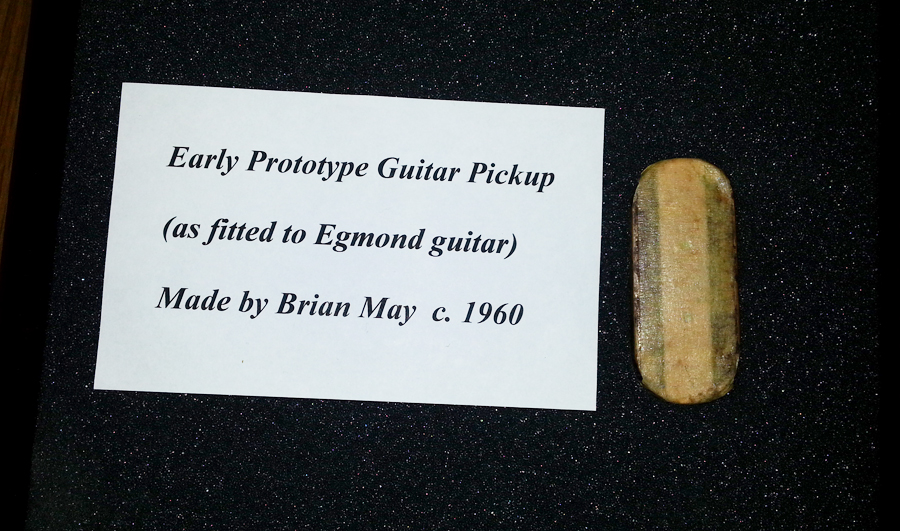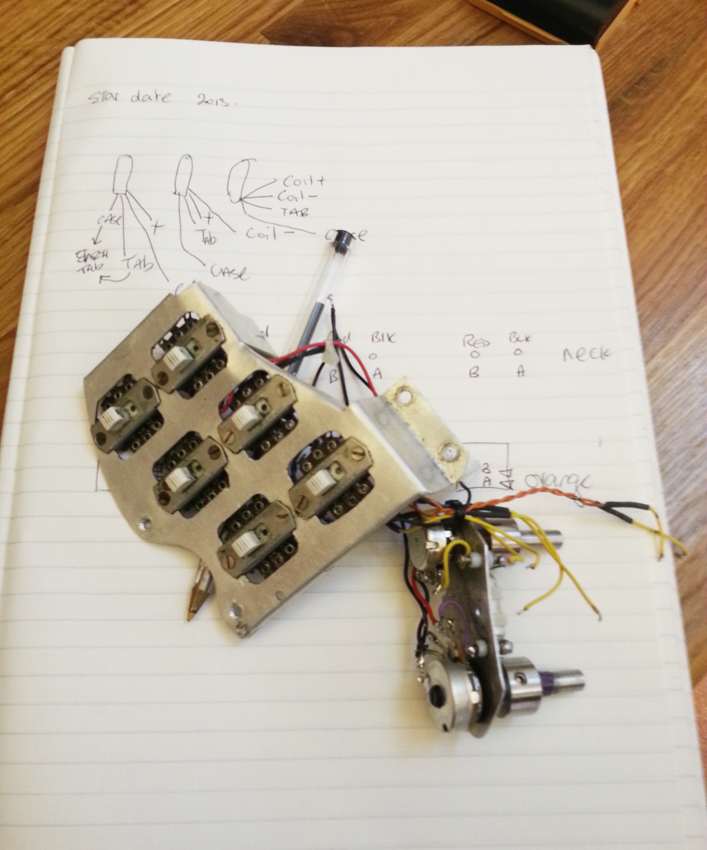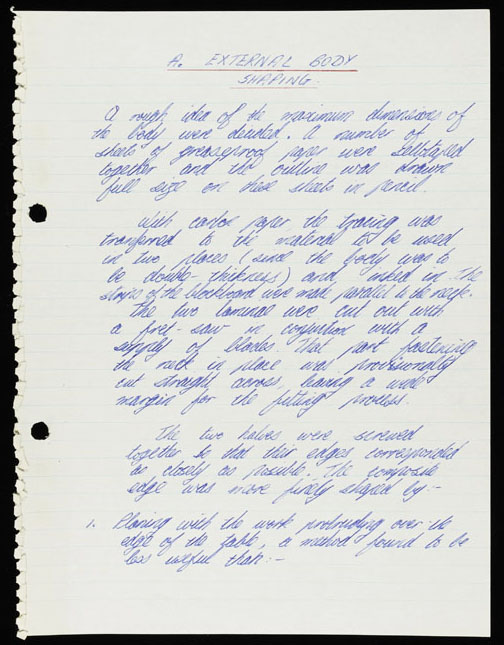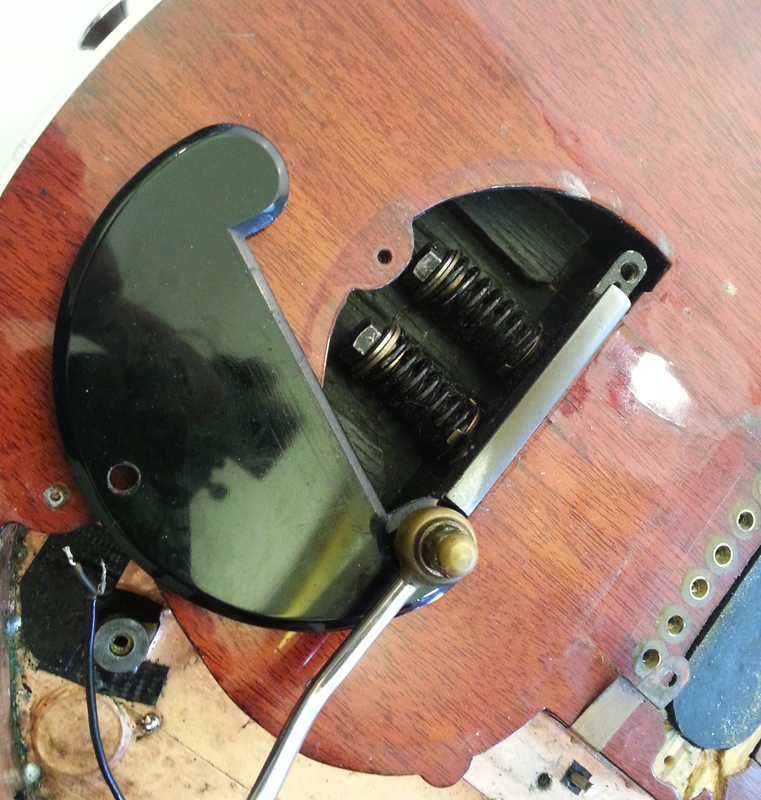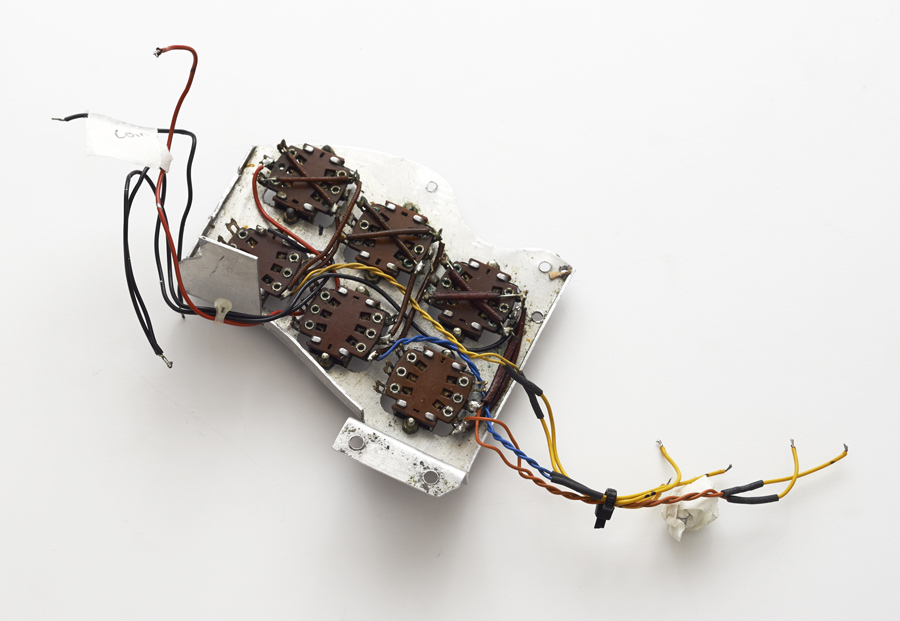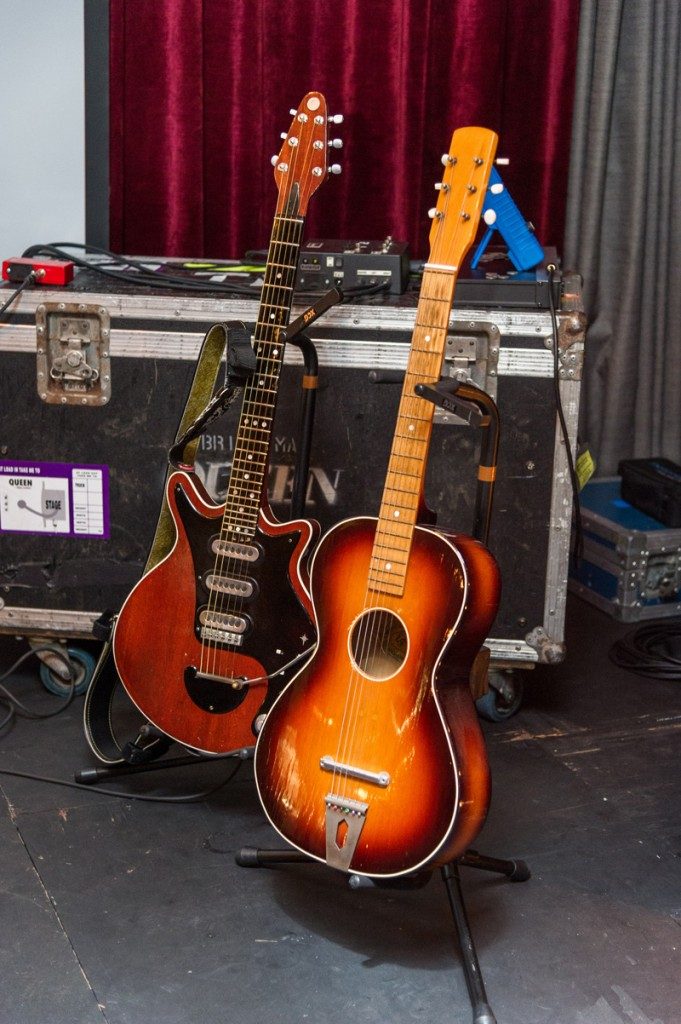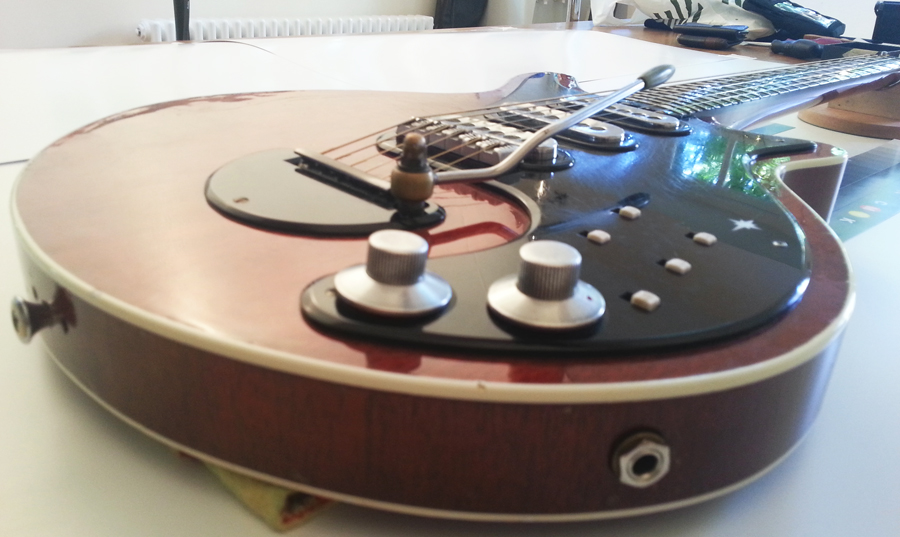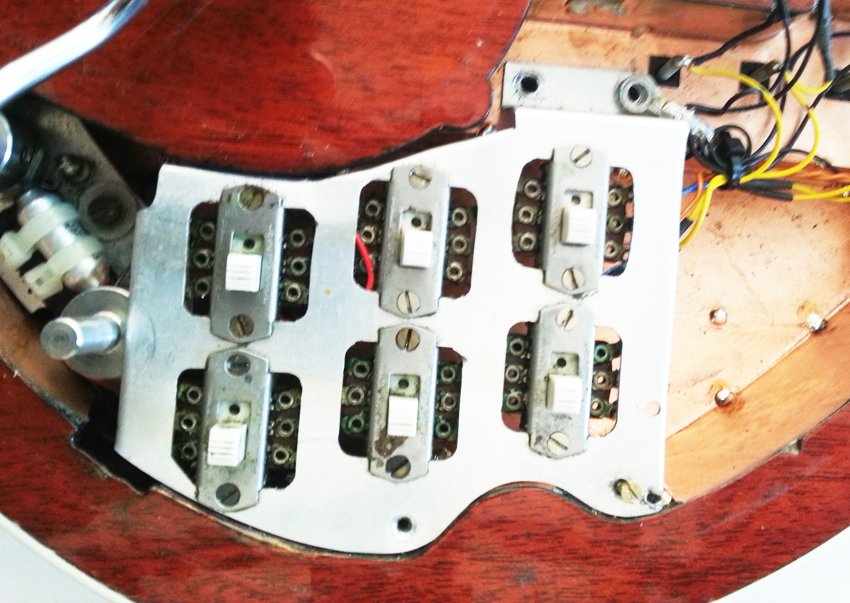A nice shot down the length of the neck and fingerboard. Note that the coin affixed to the headlock by Brian himself is actually a Brian May ‘Maydusa’ sixpence, not a genuine example of that old English coin. The original machineheads wore out long ago and have been replaced on several occasions. These are the widely-available locking Schaller M6 tuners with pearloid buttons.
We can see the pitted nature of the frets too and, as is well known these days, the Red Special has never been refretted during its long and eventful life even though, in conventional terms at least, it could really do with it!
By all means share this photo, but please credit The Red Special.com should you do so.
Happy Xmas!

